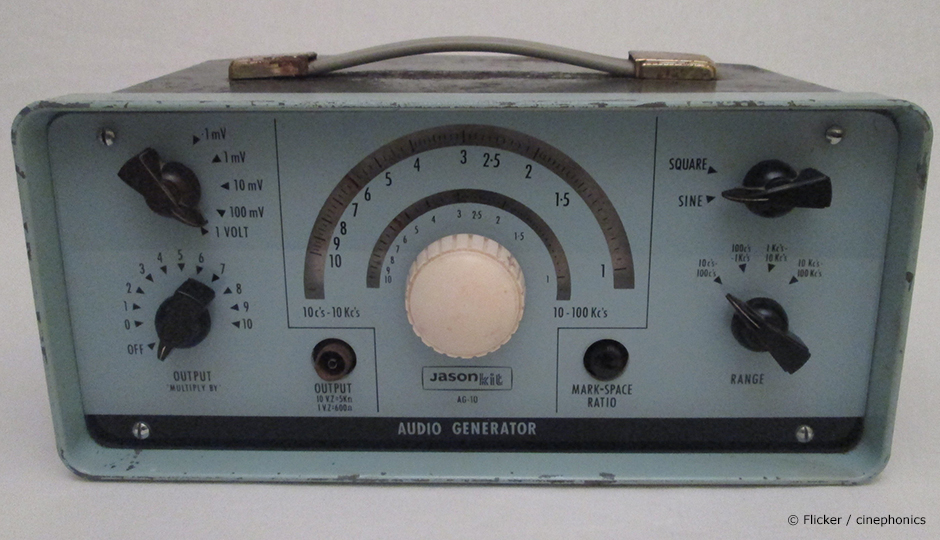The oscillator is a mid-20th century electronic instrument in the shape of a 20-by-30-centimetre box that weighs over nine kilograms and produces only a single sound. A priori, it is hardly the ideal tool for composing musical pieces. And yet, that is the challenge at the heart of the Oscillator Ensemble project headed by Nicolas Bernier, director of the Son / Matière laboratory at Université de Montréal’s Faculty of Music.
The use of such a basic instrument forced them to exploit every nuance of this sonic wave.
The oscillator originally served to calibrate electronic telecommunications systems, but in the 1950s, inventive musicians used it to create the first electronic music. It was subsequently consigned to oblivion by technological advances and the arrival of computers. These made it possible to create any imaginable sound, while the oscillator produced only a single sound: a sine wave.
The researcher brought together a group of ten musicians to compose music using oscillators. The use of such a basic instrument forced them to exploit every nuance of this sonic wave. The team also developed an application allowing musicians to read musical scores made, not of ‘A’s, ‘B’s and ‘C’s but of frequencies and amplitude modulations, illustrated graphically.
In addition to revisiting masterpieces from the beginning of the era of electronic music, including Jar Piece (1966) by Pauline Oliveros, the music ensemble has stimulated the creativity of Québec composers and fostered collaboration with internationally renowned artists.
The musicians are now trying to translate the abstract works of painter Yves Gaucher into music. They are also developing introductory workshops on electronic music for children. Very little research has been done on music created using sine waves. Over the next few years, the group hopes to collaborate with historians, archivists, technicians and musicologists to enrich our knowledge in this field.




